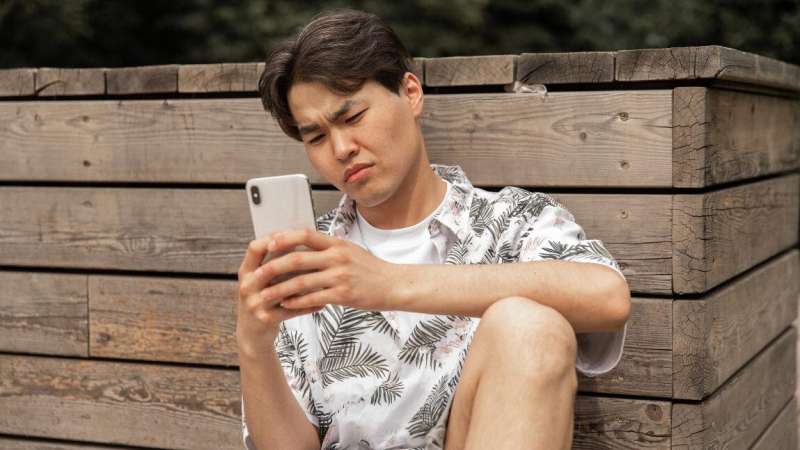Teens who experience bullying through digital messaging or social media are at increased risk for low self-esteem, substance abuse and suicide. Credit: Monstera from Pexels
It's well-known that regular exercise reduces anxiety and improves mood. Vast amounts of evidence conclude that routine physical activity positively impacts mental health for people of all ages. For teenagers, though, frequent exercise may be a matter of life or death: Ongoing research by professor Jeremy Sibold shows a link between frequent physical activity and a reduction in suicidality by bullied adolescents, who are also at increased risk for low self-esteem, anxiety, depression, sadness and substance abuse.
Research by Dr. Sibold, published in the Journal of School Health, suggests that teens who experience cyberbullying—through digital messaging or social media—may need even more exercise, coupled with social support.
Sibold's research team used combined data from the 2013 and 2015 Center for Disease Control Youth Risk Behavior Surveillance System (YRBSS) to analyze odds ratios between exercise, sadness, suicidal ideation and attempt, stratified by bullying exposure and type.
"The survey asks students to self-report whether they have been bullied and how, whether hit, shoved or teased on school properly or electronically, or both" explains Sibold. "It also asks how many days they are physically active for a total of 60 minutes or more per day."
The results showed more frequent exercise was associated with decreased odds of sadness, suicidal ideation, and suicide attempt among adolescents in grades 9–12, but the results differed by bullying environment. Students who were bullied on school property and exercised more frequently had a considerable reduction in sadness, suicidal ideation and suicide attempt. Students bullied electronically who exercised more frequently had no significant reduction in their reports of sadness or suicidality.
Why does exercise impact mental health differently for kids who were bullied electronically? Sibold surmises it's related to the pervasiveness and permanency of electronic media, and the inability of bully victims to extricate themselves from an ongoing threat.
"With traditional bullying, getting picked on in the playground or at school, kids can go home and get away from it. When school's out, the bullying ends," Sibold says. "Electronic bullying is always in our pocket, you can't escape it. If kids are on TikTok, Snapchat or Instagram, they never can get away from it because it's 24/7, 365 days a year, and it never goes away. Once it's out there, it's out there. And it appears that exercise by itself isn't enough of an escape for these kids. "
This research follows a 2015 study by Sibold, published in the Journal of American Academy of Child and Adolescent Psychology, that found an overall a 23% reduction in sadness and suicidality in bullied students who are active for at least an hour per day, four or more days per week. The results suggest that offering adolescents more physical education classes and activities will reduce sadness and prevent suicide.
Some studies show that children peak in physical activity participation at around 12 to 14 years old, after which many find fewer opportunities to be active.
"Think about when that is in a person's lifespan. You go from middle school to high school, and now you have to 'make the team." Now everybody doesn't get to play. It's also right when P.E. becomes an elective, or it's just one or two days a week. Right when they are entering the throes and upheaval of all the teen angst and dealing with hormonal and identity stuff, anxiety and depression start to skyrocket, that's when we're making it harder to be physically active," says Sibold, a father of school-age children. "If anything, they need more physical activity. They need to move an hour or more a day, four or more days a week. We've shown when they do this, they don't kill themselves. That's very compelling to me."
Further research will consider physical activity context and settings. "It appears that kids who participate on team sports have profound reduction in depression and suicidality versus kids who derive their physical activity solely from P.E. class. Kids need the social support of teams. It doesn't have to be competitive. It can be a hiking team, geocaching or dance."
In the course EXSC 242 Exercise and Sports Psychology, Sibold shares these ideas in a segment on exercise as an intervention for anxiety and depression, substance abuse, eating disorders, post-traumatic stress disorder, adolescent mental health, suicidality and cognition in older people.
"Bully victimization more than doubles the risk of suicidality as an adult," Sibold tells students. "Teaching children to be physically active has lifelong benefits that include reducing mental health risks. Long-term impact is dramatic, and might change the path of people's lives."
More information: Jeremy Sibold et al, Bullying Environment Moderates the Relationship Between Exercise and Mental Health in Bullied US Children, Journal of School Health (2019). DOI: 10.1111/josh.12864
Provided by University of Vermont























